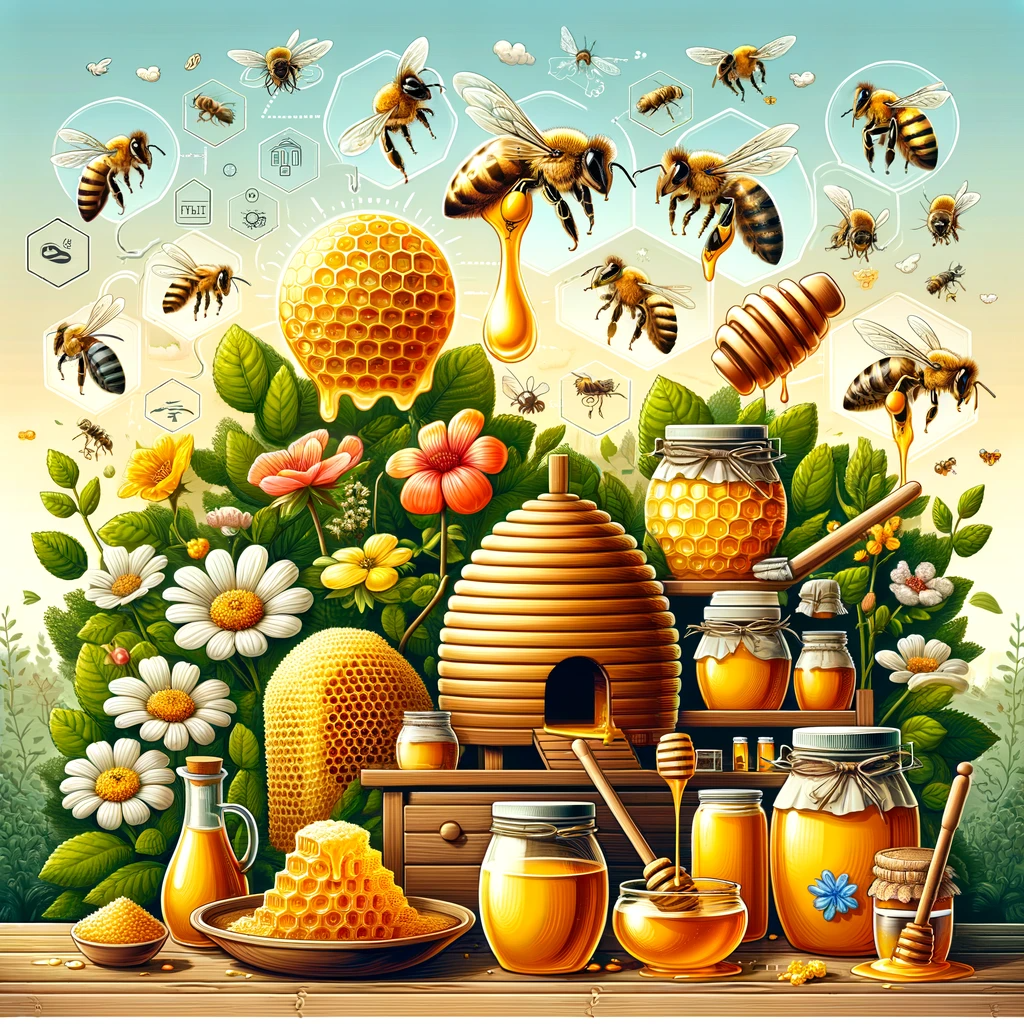Beekeeping, also known as apiculture, is a fascinating and rewarding hobby or business venture that involves the management of bee colonies for honey production. Honey, a natural sweetener and versatile ingredient, has been cherished by humans for centuries. In this article, we’ll delve into the essential ingredients in the beekeeping process, highlighting key aspects that are crucial for successful honey production.
The Beehive: The Heart of Beekeeping
1. Choosing the Right Hive
- Hive types: Langstroth, Top Bar, and Warre
- Consider local climate and bee species when selecting a hive
2. Hive Components
- Bottom board, brood boxes, supers, frames, and inner and outer covers
- Quality materials for durability
3. Hive Placement
- Optimal sun exposure and protection from harsh elements
- Accessibility for inspections and maintenance
The Bee Colony: Your Workforce
1. Honeybees Species
- Apis mellifera, the most common honeybee species
- Knowledge of species behavior and needs
2. The Queen Bee
- Lifespan and role in the colony
- Requeening for productivity
3. Worker Bees
- Majority of the colony
- Tasks: foraging, nursing, guarding, and more
- Lifespan and seasonal roles
4. Drone Bees
- Males with a sole purpose: mating with the queen
- Limited lifespan
The Hive Management: Key to Honey Production
1. Beekeeping Equipment
- Protective gear: bee suits, veils, and gloves
- Smoker for calming bees during inspections
- Hive tools for frame manipulation
2. Seasonal Management
- Spring: colony expansion and nectar flow
- Summer: honey production peaks
- Fall: preparing for winter
- Winter: survival strategies
3. Pest and Disease Control
- Varroa mites, Nosema, and other common threats
- Regular inspections and treatments
4. Feeding
- Supplemental feeding during nectar dearths
- Sugar syrup or fondant as alternatives
The Harvest: Collecting Liquid Gold
1. Timing
- Harvesting honey when frames are capped
- Avoiding premature harvesting
2. Extracting Honey
- Uncapping frames with an uncapping knife
- Using a honey extractor to spin out honey
3. Filtering and Bottling
- Removing debris and air bubbles
- Storing honey in clean, airtight containers
The Rewards: Benefits of Beekeeping
1. Delicious, Natural Honey
- Unique flavors based on nectar sources
- Health benefits of raw honey
2. Beeswax and Other Bee Products
- Beeswax for candles, cosmetics, and more
- Royal jelly, propolis, and pollen
3. Pollination Services
- Supporting local ecosystems
- Increasing crop yields
Beekeeping is a multifaceted and rewarding endeavor that not only provides you with sweet, golden honey but also contributes to the preservation of these crucial pollinators. By understanding the essential ingredients in the beekeeping process, you can embark on a journey that benefits both you and the environment. So, whether you’re a beginner or an experienced beekeeper, remember that a thriving colony is the key to a bountiful harvest of liquid gold. Happy beekeeping!
